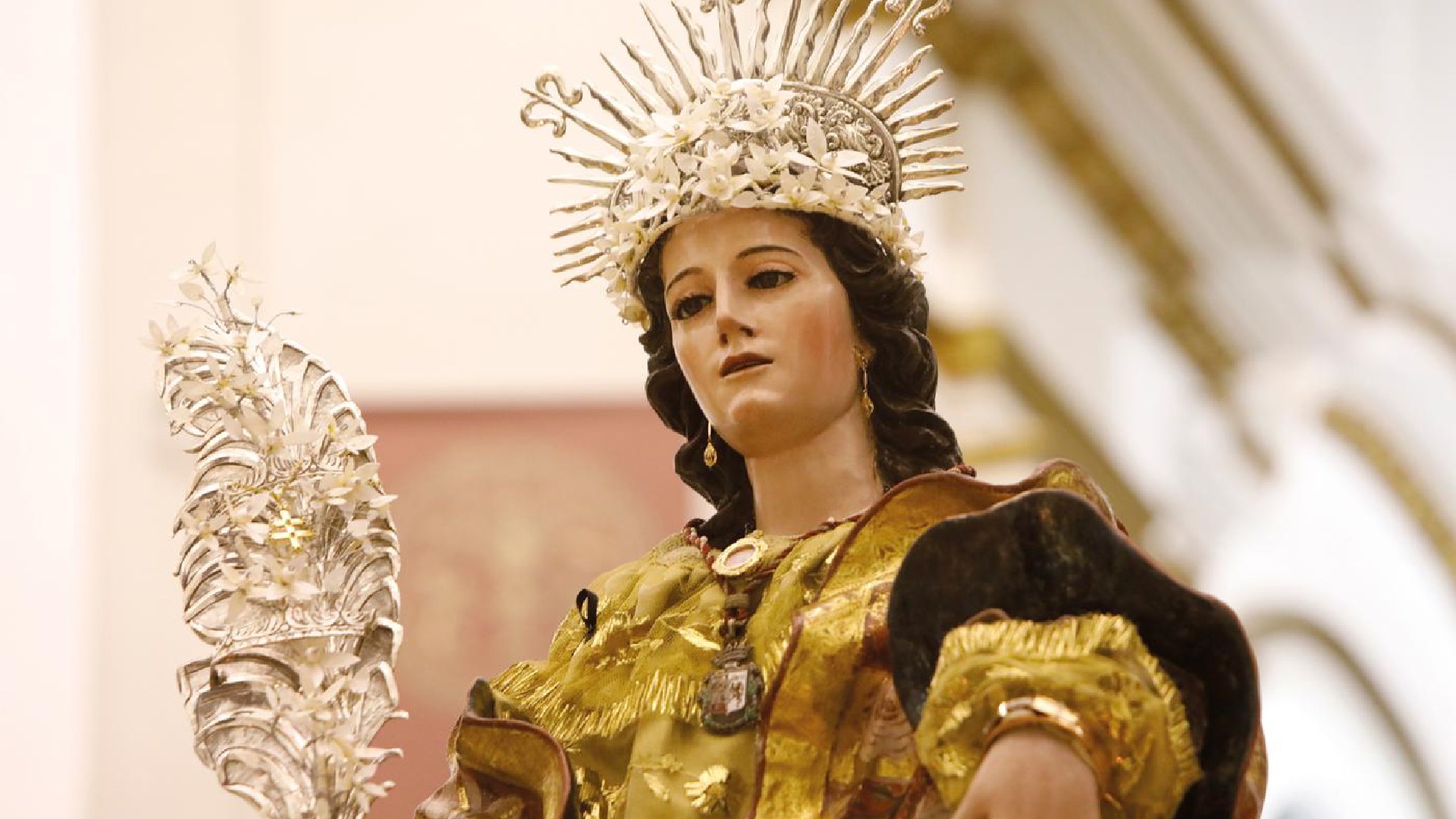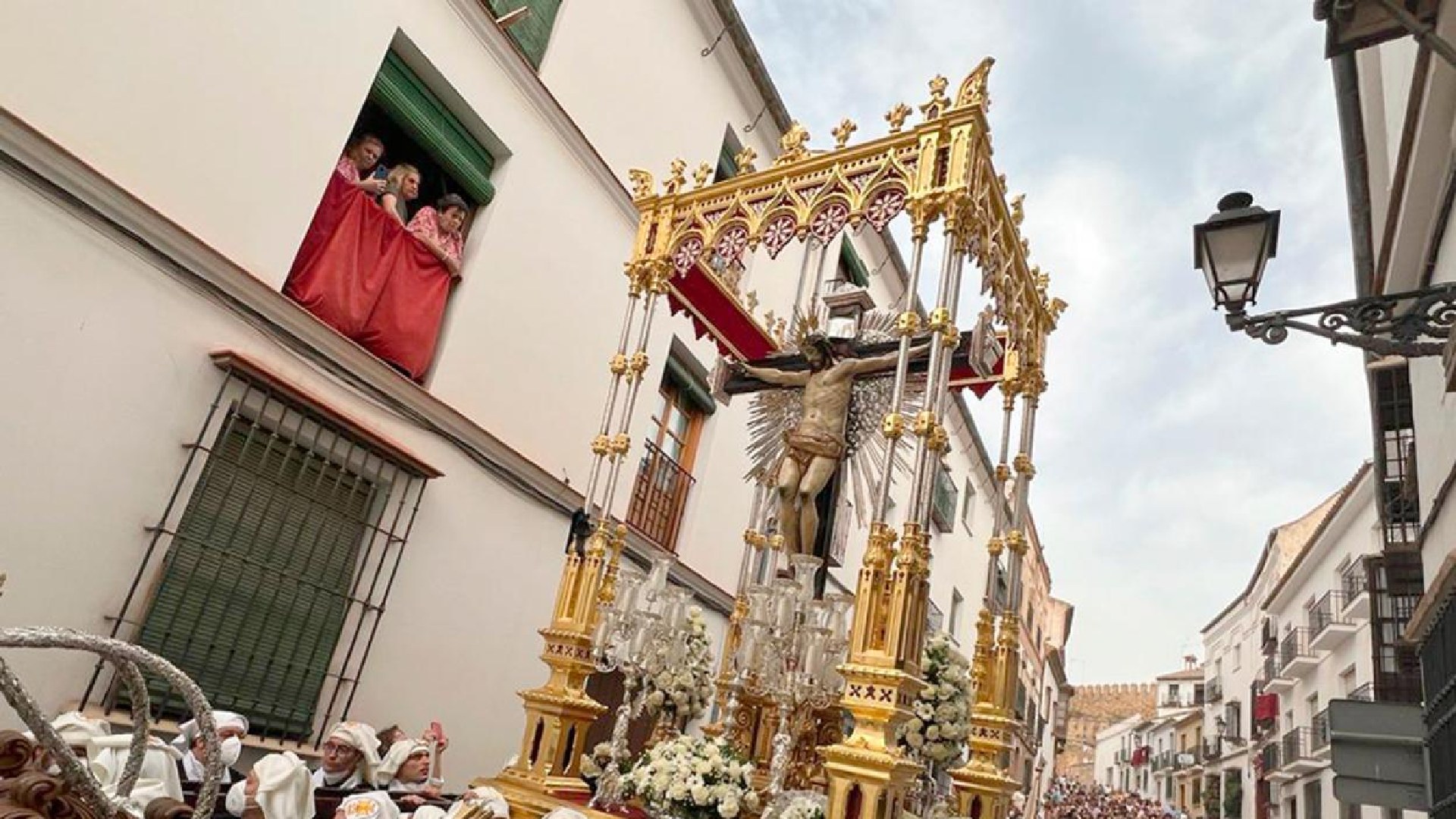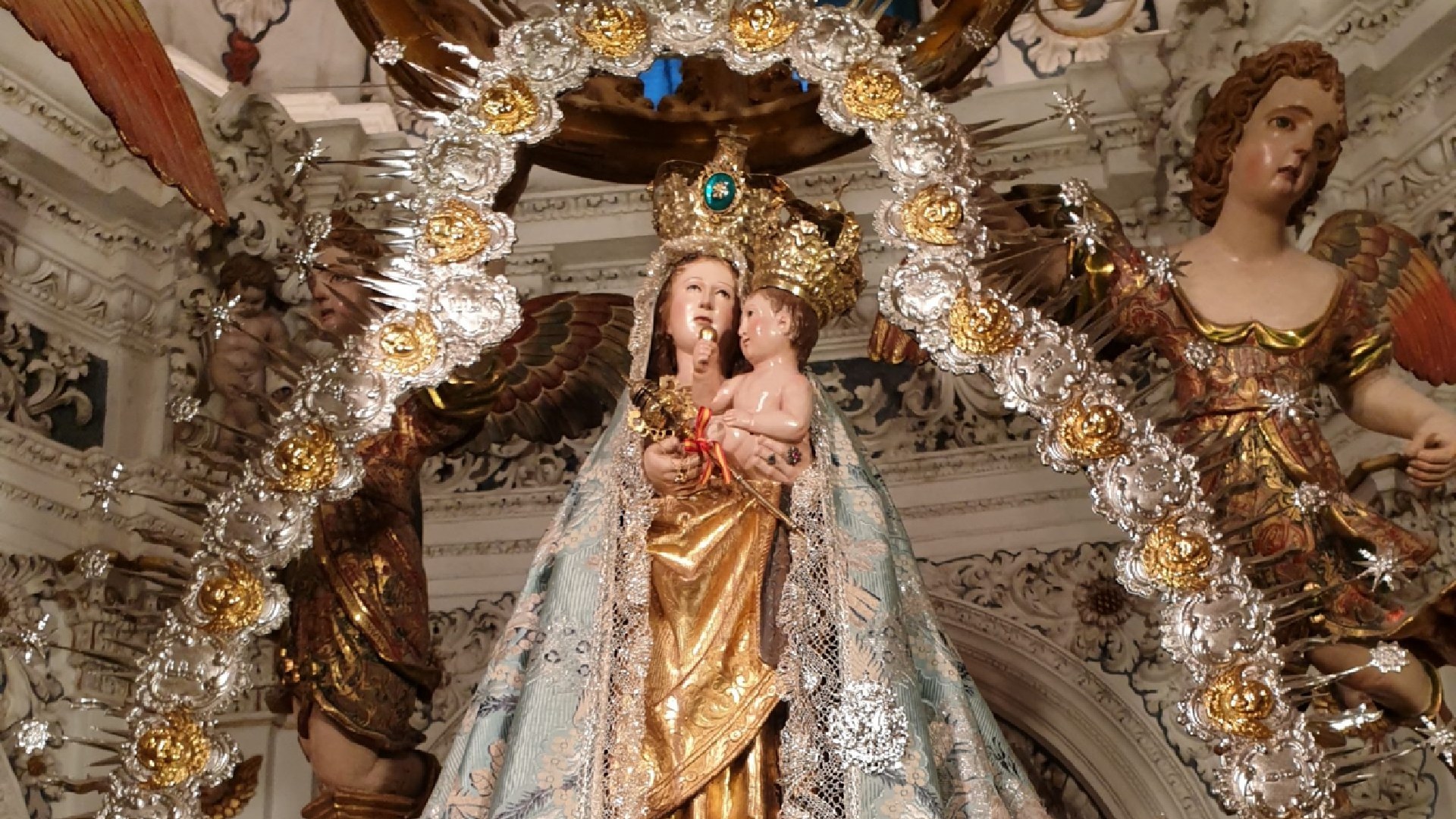Saint Euphemia
On the Saturday before September 16, Antequera celebrates the procession in honor of Santa Eufemia, performing the traditional candles. However, it is the next day when the name day of this Saint is commemorated with a Solemn Mass and the capture of the city by the Christian troops in 1410. In this mass, which takes place in the church of Santa Eufemia, the Municipal Chapter participates, which renders the banner of the city to the owner of this temple.

The origin of this tradition must be sought in the days following the conquest of the city. Once Rodrigo de Narváez was appointed as mayor of the town and endowed with a coat of arms, it was necessary to put Antequera under divine protection, looking for a patron who would serve as an intercessor before God. The custom of the time was to name the Saint protector of the city whose feast coincided with the date of the conquest. According to this criterion, on September 16 the Roman Missal included St. Cornelius, St. Cyprian, and St. Euphemia. So they chose to make a draw among them, leaving three consecutive times the name of Santa Eufemia, martyr from Chalcedonense who was elected Patroness of Antequera.
Lord of Health and Water
On the afternoon of the last Saturday of April, one of the most deeply rooted devotions in Antequera begins every year: the cults of the Holy Christ of Health and Waters, Patron Saint of the city. That day takes place the transfer of the Lord from his usual chapel, in one of the lateral naves of the parish church of San Juan Bautista, to the main altar of the same, in what is called the “Descent of the Lord”.

From that day until mid-May, the church of San Juan – located in the neighborhood of the same name – becomes the center of the pilgrimage of many Antequeranos who pay their fervor to the image of this crucified Christ. Between May 1 and 18, two novenas to the Lord are celebrated, following a text that has remained unchanged for almost two centuries. The different professional guilds as well as the associations of the city share the organization of the functions during those days. It was precisely the wool guild, so important in Antequera in 1700, that donated the cross of the Lord.
On the Saturday following May 18, the Lord is taken in procession through the streets of the city, on a throne with neo-Gothic pallium of the late nineteenth century. That day thousands of faithful come from the region and other cities where Antequera residents live, who maintain the tradition of “enlightening the Lord”.
In 2018, the silversmith artisan from Antequera, Pepe Cantos, made the burst of embossed and chiseled clouds topped with groups of rays or beams of light around the effigy of our Patron.
Virgen de los Remedios
The city celebrates on September 8 the day of the Virgen de los Remedios, Patroness of the City and Perpetual Mayor of the same, which takes out in procession wearing some of the pieces of jewelry of the wide and beautiful collection that preserves. According to legend, the image was brought to Antequera by the apostle Santiago to protect the city from all evils, and from the first moment the people showed great devotion. In 1711 the congregation of the Venerable Slavery of Our Lady of Remedies was constituted and founded, in order to worship and extend devotion to the Blessed Virgin of Los Remedios. This congregation will settle in the Convent of Los Remedios (today Municipal Palace), in whose church the image of this Virgin is currently located.

In 1922 all the ecclesiastical and municipal forces of the city asked Rome that the Virgin be canonically crowned, an event that would take place on September 10 of the same year. The image of Nuestra Señora de los Remedios is a sculpture of the early sixteenth century that, within its incipient Renaissance style, participates in the last influences of late Gothic. Its iconography represents the Virgin Mother, standing and with the Child Jesus resting on her left side. This carving is made of red pine wood and has a height of 66 centimeters.
